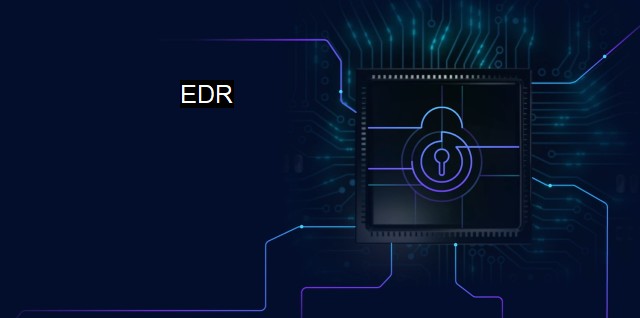What is EDR?
Endpoint Detection and Response: Safeguarding Your Business against Cyber Threats
Endpoint Detection and Response (EDR) is a sophisticated method used to monitor, detect, and rapidly respond to threats on an end-user device such as smartphones, tablets, or laptops. The primary idea behind EDR is to offer continuous monitoring and response to advanced security threats across various endpoints in a network. It does not merely mark and overlook a potential problem but digs deeper into the issue to completely decipher it and provide an all-inclusive solution.EDR technology draws from the antivirus software domain which has been expanded upon to include numerous proactive and more advanced protection measures. It has emerged as a crucial component in the architecture of cybersecurity solutions due to the growing complexity and number of cyberattacks with technological advancement.
Traditionally, antivirus software was designed to scan every file coming into a network for known threats. this strategy posed security gaps as new and unknown threats, or zero-day attacks, couldn't always be identified by antivirus software. This realization birthed the idea of EDR which, unlike traditional antivirus software, does not solely rely on known threat databases to detect anomalies.
Instead, EDR explores with artificial intelligence (AI) and behavior analytics to understand the normal behavior of users and systems. Any abnormal patterns, operation, or behavior that deviates from this established baseline is flagged as a potential security threat. This means EDR can protect against not just known cyber threats but also the ones that are tweaked or modified in some manner, including sophisticated threats patterns that are yet unknown.
By using an EDR solution, an organization can have an in-depth glimpse into every endpoint in their network system. Such a solution offers visibility into processes running on each system, all active network connections, and even identifies any changes made to the system files. EDR also collects relevant data from endpoints and uses analytics to recognize patterns that could indicate a cyber-attack.
Once an abnormal activity is noticed, EDR immediately responds to quarantine the specific endpoint, investigate the issue, and resolve it. It can notify IT administrators about the malicious activity and provide comprehensive details about the origin of the attack, its mode of delivery, its operation, changes made by it, and even its movement all across the network. Such knowledge not only helps to protect the existing system but prepares for and prevents future attack possibilities. Thus, EDR combines elements from antivirus, firewall, data loss prevention, and intrusion detection to give robust protection against threats.
Organizations across the world resort to EDR due to its benefits. The ability EDR has to integrate with other security products means it fits snugly into a diverse range of Security Operations (SecOps) situations. By boosting efficiency and providing in-depth analysis, it brings faster response times and enables the maximum utilization of resources.
Like any other system, EDR is not without its flaws. The complexity and amount of data analyzed can lead to a substantial number of false positives. Also, if not correctly configured and managed, EDR tools could potentially miss advanced threats. Because of its complexity, EDR strategy requires trained security personnel to configure, interpret and handle the system, adding to its operation cost.
While the EDR can not cover all security holes by itself, the astounding advances it offers cannot be overlooked. EDR is most effectively employed as part of a more significant comprehensive stronghold of defense mechanisms within an integrated security portfolio. As cyber threats continue to grow and evolve, technologies like EDR are becoming essential tools for organizations to generate cyber resilience and safeguard their confidentiality, integrity, and availability of data.

EDR FAQs
What is EDR?
Endpoint Detection and Response (EDR) is a cybersecurity technology that provides real-time visibility into endpoint activity, allowing security teams to monitor, investigate, and respond to potential threats.How is EDR different from traditional antivirus software?
EDR goes beyond signature-based antivirus solutions by detecting and responding to suspicious behavior and anomalies, rather than just known malware. EDR also provides more granular visibility and control over endpoint activity, allowing for faster and more effective incident response.What are some common features of EDR solutions?
Common features of EDR solutions include real-time endpoint monitoring, behavior-based threat detection, automated response actions, threat intelligence integration, and forensics capabilities for incident investigation.What are the benefits of using EDR for cybersecurity?
EDR provides comprehensive visibility and control over endpoint activity, enabling faster, more effective threat detection and response. It can also help organizations improve compliance with data protection regulations and reduce the risk of data breaches and other cyber threats.Related Topics
Endpoint Protection Behavioral Analysis Wireless Security Malware Analysis Data Breaches
| | A | | | B | | | C | | | D | | | E | | | F | | | G | | | H | | | I | | | J | | | K | | | L | | | M | |
| | N | | | O | | | P | | | Q | | | R | | | S | | | T | | | U | | | V | | | W | | | X | | | Y | | | Z | |
| | 1 | | | 2 | | | 3 | | | 4 | | | 7 | | | 8 | | |||||||